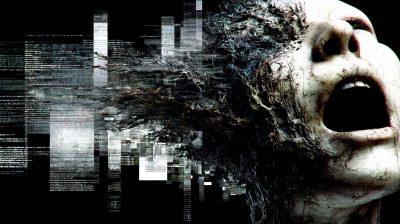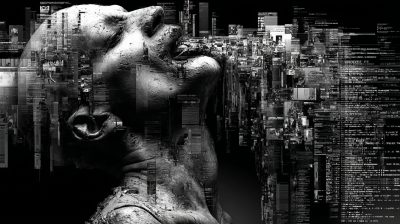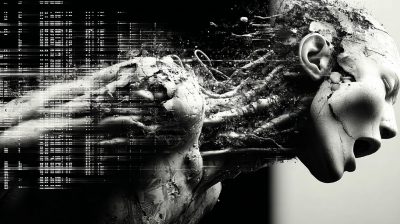The Misconception of Recycled Prompts in Testing New AI Models for Image and Video Generation
As AI-generated imagery and video continue to evolve at a rapid pace, many users fall into a critical trap: reusing old prompts to test new models. This approach often leads to misleading comparisons, suboptimal outputs, and an inaccurate assessment of a model’s true capabilities.
Each AI model—whether Stable Diffusion, MidJourney, Veo3, or Kling 2.1—has unique architectures, training datasets, and prompt interpretation mechanisms. A prompt finely tuned for one model may perform poorly on another, creating a false impression of inferiority or superiority. To fairly evaluate these systems, we must understand their distinct prompt structures and optimize inputs accordingly.
Why Recycled Prompts Fail in AI Testing
1. Different Training Data & Tokenization
-
Stable Diffusion was trained on LAION-5B, favoring technical descriptors.
-
MidJourney was fine-tuned on curated artistic datasets, responding better to stylistic cues.
-
Veo3 and Kling 2.1 were trained on different video datasets, affecting motion and scene coherence.
2. Model-Specific Keyword Prioritization
-
Some models weigh certain terms (e.g., „hyperrealistic,“ „cinematic“) differently.
-
Negative prompts work well in Stable Diffusion but are less impactful in MidJourney.
3. Evolving Capabilities Require New Approaches
-
Older prompts may not leverage new features (e.g., 3D consistency in Veo3 or expressive motion in Kling 2.1).
Optimal Prompt Structures for Image Generation: Stable Diffusion vs. MidJourney
Stable Diffusion (SDXL, SD 3, etc.)
Stable Diffusion thrives on structured, technical prompts with explicit modifiers.
Key Elements:
✅ Weighted terms ((keyword:1.3)) for emphasis
✅ Negative prompts to exclude unwanted artifacts
✅ Precision in lighting, composition, and style
Example Prompt:
„A futuristic cyberpunk city at night, (neon lights:1.3), (wet pavement:1.2), cinematic wide-angle shot, hyper-detailed, 8K, Unreal Engine 5 render“
MidJourney (v6, v7, Niji)
MidJourney prefers natural, artistic language over technical jargon.
Key Elements:
✅ Stylistic descriptors („ethereal,“ „dreamy,“ „oil painting“)
✅ References to artists or movements („in the style of Studio Ghibli“)
✅ Simpler, mood-driven phrasing
Example Prompt:
„A serene enchanted forest at twilight, soft glowing mushrooms, Studio Ghibli style, whimsical and magical“
Testing Takeaway:
-
Using a Stable Diffusion-style prompt in MidJourney may produce overly rigid results.
-
A MidJourney-style prompt in Stable Diffusion might lack detail without weighted terms.
Optimal Prompt Structures for Video Generation: Veo3 vs. Kling 2.1
Google’s Veo3
Veo3 is optimized for high-fidelity, cinematic videos with smooth motion.
Key Elements:
✅ Temporal cues („slow-motion,“ „time-lapse,“ „seamless transition“)
✅ Cinematic framing („wide shot,“ „close-up,“ „dolly zoom“)
✅ Realistic lighting & physics („volumetric fog,“ „natural sunlight“)
Example Prompt:
„A lone astronaut walking on Mars at sunset, slow-motion dust swirls, IMAX documentary style, hyper-realistic 4K footage“
Kuaishou’s Kling 2.1
Kling 2.1 excels in dynamic, expressive, and viral-friendly video generation.
Key Elements:
✅ Action-driven descriptions („fast-paced fight scene,“ „dramatic camera angles“)
✅ Trending aesthetics („anime-style,“ „cyberpunk,“ „TikTok viral effect“)
✅ Cultural references (works well with East Asian visual styles)
Example Prompt
Testing Takeaway:
-
Veo3 performs best with realistic, film-like prompts.
-
Kling 2.1 shines with high-energy, stylized content.
How to Properly Test New AI Models
To avoid unfair comparisons, follow these guidelines:
-
Study the Model’s Strengths
-
Is it optimized for realism (Veo3) or stylization (Kling 2.1)?
-
Does it prefer technical (Stable Diffusion) or artistic (MidJourney) prompts?
-
-
Avoid Blindly Reusing Prompts
-
Refine prompts based on the model’s documentation and community examples.
-
-
Benchmark with Multiple Prompt Styles
-
Test realistic, stylized, abstract, and dynamic prompts for fairness.
-
-
Compare Outputs Under Controlled Conditions
-
Use the same seed (if possible) and evaluate detail, coherence, and motion quality.
-
Conclusion: Prompt Engineering Must Evolve with AI
Recycling old prompts when testing new AI models leads to misleading conclusions. Each system has unique strengths that only emerge when prompts are tailored to its architecture and training.
For accurate comparisons:
-
Adapt prompts per model.
-
Test diverse input styles.
-
Stay updated on model-specific optimizations.
The future of AI-generated media isn’t just about better models—it’s about better prompting strategies. Are you still using outdated prompts, or have you adapted to the new generation of AI?





